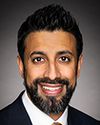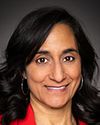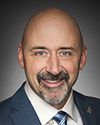Mr. Chair, first let me say the fact that we were able to project combat power from Canada into a contested environment on the other side of the world where we had not had a military presence for seven years and rescue 3,700 people is pretty amazing when you think about it.
How were we able to do that? First, we took advantage of the strategic lift capability that we had, specifically in the form of the C-17s.
Second, with the strategic communications aspect that we had, we were able to monitor the situation and feed minute-to-minute and hour-to-hour intelligence and communications back and forth across the globe.
Third, we took advantage of the incredible network of partners and allies that we have around the world and the embedded staff that we have in leadership positions in such places as U.S. Central Command headquarters and outside the chairman of the Joint Chiefs of Staff office in the Pentagon. With our task force in Kuwait, we housed many of the Afghans that we brought out. We had personnel in the combined air operations centre—the CAOC as we call it—in Qatar. Leveraging that network allowed us to very efficiently work with our allies and make sure this was well coordinated.
If we want to get into more details, I have Vice-Admiral Auchterlonie here who managed many of those details on an hour-to-hour basis, but time may be limiting us here.




